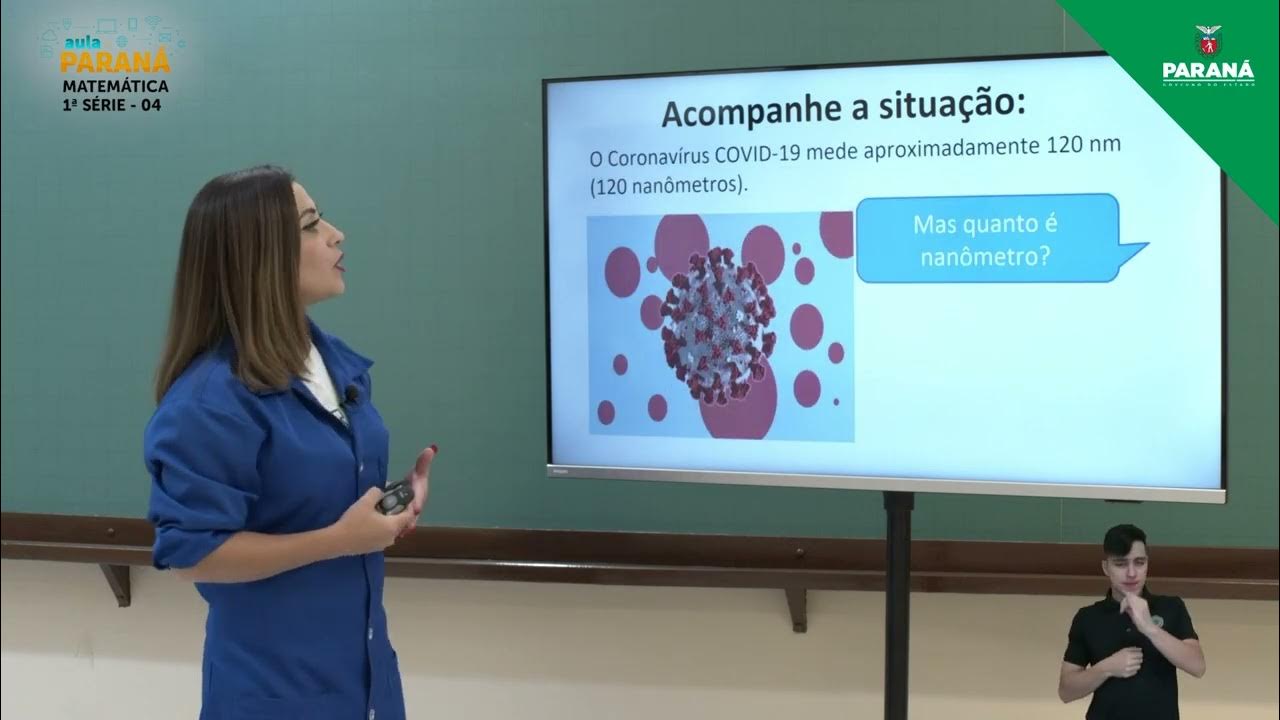Scientific Notation and Dimensional Analysis
Summary
TLDRIn this video, Professor Dave explains scientific notation and dimensional analysis, helping viewers understand how to handle very large and very small numbers efficiently. He illustrates how scientific notation simplifies complex numbers with exponents of 10, making them easier to read and work with. The video also covers the concept of unit modifiers like kilo and nano, as well as dimensional analysis for unit conversion. By applying these concepts, viewers can convert between units and express values across various scales, from atoms to the universe, using a unified system.
Takeaways
- 😀 Humans count using a system based on 10 because of our 10 fingers, and this system extends into larger and smaller numbers.
- 😀 Scientific notation is used to simplify very large or very small numbers by expressing them with a single digit, followed by a decimal point and an exponent of 10.
- 😀 1.42 x 10^2 equals 142, as the decimal moves two places to the right, showing how scientific notation works for large numbers.
- 😀 3.5 x 10^-2 equals 0.035, demonstrating how scientific notation is used for small numbers by moving the decimal to the left.
- 😀 Scientific notation is useful for expressing numbers in various fields, whether it's the diameter of atoms or the distance to stars, all using the same unit (meters).
- 😀 Units like kilo (10^3) and nano (10^-9) are used as modifiers to represent different magnitudes, simplifying large and small values.
- 😀 Dimensional analysis helps convert between units by multiplying by a fraction equal to 1, adjusting the expression of a value without changing its quantity.
- 😀 For example, to convert meters to nanometers, multiply by a fraction where the numerator and denominator are equivalent values in different units.
- 😀 Unit conversion is like algebra: canceling out common units allows us to express the same value in a new unit, just like simplifying equations.
- 😀 The script demonstrates converting time, such as calculating how many seconds are in a year by using known conversion factors for days, hours, minutes, and seconds.
Q & A
Why do humans use the base 10 system for counting?
-Humans use the base 10 system for counting because we have 10 fingers, which naturally led to the development of a counting system based on powers of 10.
How does scientific notation help with large numbers?
-Scientific notation helps with large numbers by expressing them in a more compact form, using a single digit followed by a decimal point and multiplied by 10 raised to an exponent. This allows for easy representation of very large or small numbers.
What is the significance of the exponent in scientific notation?
-The exponent in scientific notation represents the magnitude of the number. A positive exponent indicates a large number, while a negative exponent represents a small number. It shows how many places the decimal point should move.
How do you convert 1.42 × 10^2 into a standard number?
-To convert 1.42 × 10^2 into a standard number, you move the decimal point two places to the right, resulting in 142.
What does 10^-2 mean in scientific notation?
-10^-2 means one hundredth (1/100). In scientific notation, moving the decimal point two places to the left will express the number as a decimal (e.g., 3.5 × 10^-2 equals 0.035).
How do you use unit modifiers like 'kilo' and 'nano' in measurements?
-Unit modifiers like 'kilo' (10^3) and 'nano' (10^-9) represent specific powers of 10 and are used to express values more conveniently. For example, a kilogram is 1,000 grams, and a nanometer is one-billionth of a meter.
What is dimensional analysis and how is it used?
-Dimensional analysis is a method used to convert between different units of measurement. By multiplying by a fraction that equals 1, but with different units on the numerator and denominator, you can cancel out unwanted units and express the value in the desired unit.
How do you convert meters into nanometers using dimensional analysis?
-To convert meters to nanometers, you multiply by a fraction where 1 meter is equal to 1 billion nanometers (10^9 nanometers / 1 meter), which cancels out the meters and results in a value in nanometers.
How many seconds are in a year, and how do you calculate it?
-To calculate the number of seconds in a year, you multiply 365 days by 24 hours, 60 minutes, and 60 seconds, which cancels out all units except seconds, giving a total of 31,536,000 seconds.
Why is scientific notation useful when discussing measurements like the size of atoms or the distance to stars?
-Scientific notation allows for expressing both extremely small and large measurements, such as the size of atoms and the distance to stars, in the same unit (like meters), simplifying comparison and understanding.
Outlines

This section is available to paid users only. Please upgrade to access this part.
Upgrade NowMindmap

This section is available to paid users only. Please upgrade to access this part.
Upgrade NowKeywords

This section is available to paid users only. Please upgrade to access this part.
Upgrade NowHighlights

This section is available to paid users only. Please upgrade to access this part.
Upgrade NowTranscripts

This section is available to paid users only. Please upgrade to access this part.
Upgrade NowBrowse More Related Video

Fisika Kelas 10 | Angka Penting dan Notasi Ilmiah

BAB 6 Notasi Ilmiah | Matematika Dasar | Alternatifa

Scientific Notation

FISIKA DASAR KELAS X | NOTASI ILMIAH.

2022 | Resumo da Aula | 1ª Série | Matemática | Aula 4 - Notação Científica - I

Introduction to scientific notation | Pre-Algebra | Khan Academy
5.0 / 5 (0 votes)